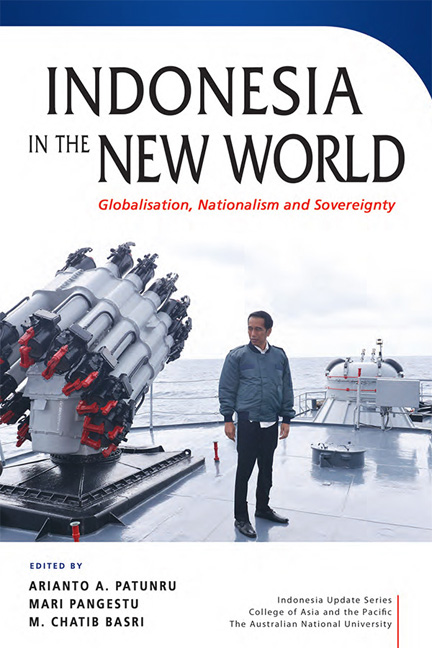Book contents
- Frontmatter
- Contents
- Tables
- Figures
- Contributor
- Acknowledgments
- Glossary
- 1 Challenges for Indonesia in the new world
- PART 1 Globalisation, Nationalism and Sovereignty: the Indonesian Experience
- PART 2 Nationalism in Practice
- PART 3 Impact of and Response to Globalisation
- PART 4 The Human Face of Globalisation
- 11 Globalisation and labour: the Indonesian experience
- 12 Restoring the rights of Indonesian migrant workers through the Village of Care (Desbumi) program
- 13 Globalisation, the role of the state and the rule of law: human trafficking in eastern Indonesia
- PART 5 Navigating The New Globalisation
- Index
- INDONESIA UPDATE SERIES
12 - Restoring the rights of Indonesian migrant workers through the Village of Care (Desbumi) program
from PART 4 - The Human Face of Globalisation
Published online by Cambridge University Press: 08 June 2019
- Frontmatter
- Contents
- Tables
- Figures
- Contributor
- Acknowledgments
- Glossary
- 1 Challenges for Indonesia in the new world
- PART 1 Globalisation, Nationalism and Sovereignty: the Indonesian Experience
- PART 2 Nationalism in Practice
- PART 3 Impact of and Response to Globalisation
- PART 4 The Human Face of Globalisation
- 11 Globalisation and labour: the Indonesian experience
- 12 Restoring the rights of Indonesian migrant workers through the Village of Care (Desbumi) program
- 13 Globalisation, the role of the state and the rule of law: human trafficking in eastern Indonesia
- PART 5 Navigating The New Globalisation
- Index
- INDONESIA UPDATE SERIES
Summary
In 2016 more than 7 million Indonesians were working as overseas migrant workers. Most were low-skilled women from poor villages with little access to decent jobs at home. Under an exploitative, centralistic, high-cost and gender-blind migration scheme, the recruiters who act as middlemen for corporate interests view Indonesian villages simply as marketplaces where they can make large profits from exploiting uneducated, unskilled villagers. Not infrequently, they use intimidation and other practices to force villagers to work overseas. Although Law No. 39/2004 on the Place¬ment and Protection of Indonesian Migrant Workers should protect the interests of those workers, in practice it has served as a vehicle for human rights violations. As a result, human trafficking activities often start at the village level, disguised as an official placement program for migrant workers under Law No. 39/2004.
To address this situation, in 2014 Migrant CARE, an Indonesian non-government organisation, established a village-based program for migrant workers: Village of Care for Migrant Workers (Desbumi). At present, more than 50 villages in East Nusa Tenggara, West Nusa Tenggara, Central Java, East Java and West Java are involved in this program. In each area, Desbumi provides information, assistance with documentation, a migrant worker database, grievance mechanisms, a compilation of relevant village rules and regulations, and post-migration economic empowerment, to ensure that migrant workers from the most at-risk villages have a safe and worthwhile migration experience. All these activities and services are listed on village government websites. The intention is to place the village at the forefront of efforts to protect migrant workers. This is important not only because the village is where the problems start, but also because villages have gained political power and increased funding under Law No. 6/2014 on Villages, which took effect in December 2014.
BACKGROUND
The 1945 Constitution of the Republic of Indonesia states that every citizen has the right to work and to live a decent life, as stipulated in article 27(2): ‘Each citizen shall be entitled to an occupation and an existence proper for a human being’. This has not been fully accomplished, however. Accord¬ing to data from the central statistics agency, BPS, 7 million working-age Indonesians were unemployed in 2016, and 28 million people were living below the poverty line.
- Type
- Chapter
- Information
- Indonesia in the New WorldGlobalisation, Nationalism and Sovereignty, pp. 225 - 242Publisher: ISEAS–Yusof Ishak InstitutePrint publication year: 2018

